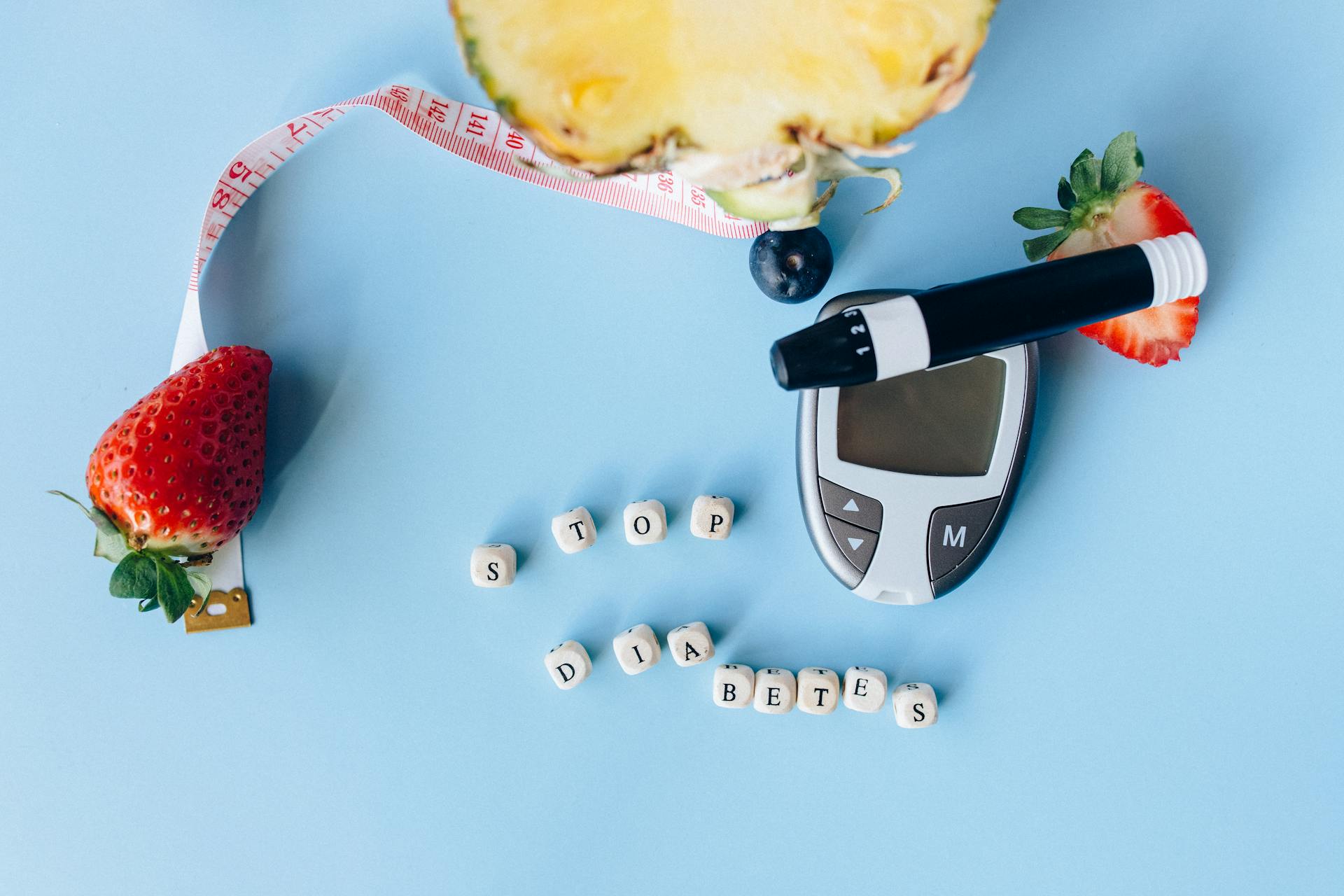Did you know the annual average cost of insulin per diabetic is about $6,000 and the monthly dosing of the 10 most advertised drugs is between about $500 and $17,000 in the States? Have you considered D’OXYVA’s immediate and significant benefits and advantages?
The administration has turned public anger at the pharmaceutical industry into real action — but has also left many meaningful opportunities on the table.
Donald Trump’s promise of sweeping health-care reform has not come to pass. While the president campaigned heavily on assurances to “repeal and replace Obamacare” on “day one” with an unspecified plan for every American to have affordable health care, his claims have now been diluted to a focus on “drug prices.”
One of his first comments on the release of the Mueller report was that it was a distraction from the need to “get back to infrastructure, get back to cutting taxes, get back to lowering prescription drug prices.”
Trump’s calls to action have been interspersed with claims of victory. In March of last year, Trump promised, “You’ll be seeing drug prices falling very substantially in the not-too-distant future, and it’s going to be beautiful.” Just 10 months later, in his 2019 State of the Union address, this had ostensibly already happened: “As a result of my administration’s efforts, in 2018 drug prices experienced their single largest decline in 46 years.”
Drug prices are still increasing. While growth in spending on drugs has slowed in recent years, total national spending continues to grow. Americans spend more than anyone else in the world. The average person spends $1,025 per year on medication — an inflation-adjusted increase of elevenfold since 1960.
Still, the cost of drugs accounts for only about 10 percent of the country’s health expenditures, and this trend has been steady for almost two decades. Exorbitant as drug prices are, a relatively small 24 percent of people say they have any “difficulty affording medications.” It is medical bills that cause much more angst and financial hardship, and are now the leading cause of bankruptcy in the United States. Slowing the growth of pharmaceutical costs would put only a small dent in the much bigger problem.
The focus on drug pricing is also curious as an ideological outlier for Trump. Among goals that have included protecting the fossil-fuel industry, deregulating big banks, and handing out corporate tax cuts, the president could be expected to celebrate the $1.1 trillion pharmaceutical sector and the many jobs it provides. Instead, at least rhetorically, here he has chosen to side with consumers.
So what has Trump actually done about drug prices?
Last year, the administration did indeed lay out some proposals in a “blueprint’’ that included a long list of niche policy bullet points. Most notable among them were efforts at transparency and simplification: eliminating some rebates paid out by drug companies that obscure the price of drugs, using international comparisons for pricing Medicare drugs, and requiring drug companies to include prices in advertising.
It would be difficult to attribute any recent changes in drug prices to these measures, though, because they have not actually taken effect yet.
In the past two weeks, the issue started to come to a boil. The Congressional Budget Office projected that limiting rebates would not result in lower list prices, and would actually increase federal spending on drugs over the next decade by $170 billion. In the wake of that setback, the administration forged ahead with an announcement on Wednesday that the requirement to disclose drug prices in TV commercials would be implemented in July.
This may be the most noticeable single move the administration has made on the issue. In its news release, the Department of Health and Human Services cites the fact that the 10 most commonly advertised drugs have list prices ranging from $488 to $16,938 per month or course of treatment. Sharing this number would hypothetically encourage companies to lower their prices. Though if the requisite two-minute listing of gruesome side effects didn’t render ads ineffective, a price tag might not either—especially when it’s not the price that most consumers end up paying.
Patchwork regulation of this sort has historically failed to contain the pharmaceutical industry, which has continued to find ways to pass costs on to consumers and remain, consistently, extremely profitable. This is in part because of a system in which several layers of middlemen and reimbursement schemes serve to keep costs hidden from both patients and doctors, and fully apart from most decision making. While the advertising-disclosure requirement is a move toward cultural consciousness of cost, it has traditionally been market competition that has led to real price decreases. At a time when Trump’s executive orders are projected to leave fewer people with comprehensive health insurance, gestures at price transparency are unlikely to render them able to afford drugs out of pocket. Though drug prices are a popular talking point, if the overall goal were actually keeping American people alive and well, it would require a systemic reform of the health-care system.
In contrast to the drugs, which are integral to our existence and the functioning of our bodies and our understanding of ourselves, the system by which we procure them is opaque and foreign to most people, even though everyone is constantly paying for drugs. Part of every American’s paycheck goes to Medicare, the largest buyer of drugs. And everyone is familiar with the drugstore itself, a sort of microcosm of the country’s drug-pricing problem.
Many of the largest pharmacy chains, such as Walgreens and CVS, explicitly brand themselves as bastions of health and/or wellness. Yet the pharmacy itself is always at the back of the store. Four of the top five most prescribed drugs in the U.S. are used to treat elements of metabolic syndrome — the constellation of high blood pressure, diabetes, and heart disease that is strongly tied to what we eat. But in order to get these medications, you have to walk past two aisles of candy (one seasonal). This is not to mention an onslaught of magazine covers of extremely thin, young people with eerily white teeth.
You can buy a whitening system for your teeth, too. And the coffee to stain them back. And the sleep aids to counteract the caffeine. If there is a unifying philosophy to drugstores, it is that they sell things that have a potential to produce profit. At the back of the store, the drugs that constitute some of the few products that are essential to life — such as insulin — are often not cheap. An annual supply of insulin in the U.S. costs more than any other country, around $6,000. What’s more, from 2012 to 2016, the price roughly doubled — a textbook case of the pharmaceutical industry inexplicably increasing prices.
Insulin was the subject of congressional hearings last month that included the three biggest makers: Sanofi, Eli Lilly, and Novo Nordisk. Pharmaceutical companies traditionally justify high prices based on the costs of developing new drugs. In the case of insulin, the innovation that would justify such costs is not obvious. These companies did not invent or reconceptualize insulin. Some changes have been made to how long various insulin formulations last in the body, but there has been no revolution; the drug is an analogue of the hormone produced in the pancreas, similar to the insulin that was taken initially from pigs and given to humans a century ago.
Just before the hearing, Sanofi and Eli Lilly announced they would lower insulin prices (for some patients). Representatives called them out for only acting once called out. Joseph Kennedy was exasperated at the fact that this happened only after “15 years of global outcry.”
The drug companies gave a new, karmic defense: that others were now unfairly profiting off of them. They blamed high consumer costs on rebates being paid to a new layer of middlemen known as pharmacy benefit managers (PBMs). The three dominant PBMs—Express Scripts, OptumRx, and CVS Health—were also present at the hearing, seated shoulder to shoulder with the pharmaceutical companies, with each industry blaming the other for high prices while in fact both were profiting. As a group, PBMs spent $1.5 millionin lobbying in the first quarter of this year, an all-time high. This is a fraction of the pharmaceutical industry’s $9.9 million spent in the same quarter. That very lobbying practice is a potential target to truly rein in drug costs that Trump has not pursued.
Whether or not the plan to ban some rebates comes to pass may matter little. Such rebates — which Secretary of Health and Human Services Alex Azar, a former Eli Lilly executive, has called “a hidden system of kickbacks to middlemen” — are already a shrinking part of PBM profits. As in most large industries, corporations often look seven or eight steps ahead of potential regulatory impediments and preemptively create new revenue streams. As the CBO report put it, prices would not come down for patients because, rather than lowering list prices, drug companies would negotiate with PBMs using an alternative process known as “chargebacks.”
Without getting too far into the details about how all this matters to those of us in line at the pharmacy, as we’re assaulted by some Bruno Mars song and forced to stare at Red Bull and discount Peeps, the semantics of drug pricing are important. Even the oft-repeated phrase drug prices is less straightforward than it seems. First, there’s a list price, which is like the sticker price on a car: traditionally not what most people actually expect to pay. (Though under the more and more common high-deductible plans supported by the Trump administration, more people are paying the full list price.) In many cases, insurers and PBMs negotiate prices that are radically different from the list price. A net price is what’s actually paid to pharmaceutical companies after rebates. The complexity is an element of the 10-dimensional chess that is not entirely unintentional, and serves to thwart attempts at price transparency.
Even drugstore receipts could serve as an imperfect analogy for the convoluted system of drug prices. If you’ve ever been to a CVS, you know that the receipts are accompanied by a scroll of coupons as long as a large dog. Sometimes there are coupons for $5 off any item — meaning a $5 bag of almonds is free. If you used all these coupons diligently, and then calculated prices accordingly, it could be difficult to get an accurate picture of costs and profits. Then imagine that the coupons were even more dramatic and numerous, and sometimes you got one that was $1,000. How would that affect the very idea of price?
Ultimately the most meaningful measurement of trends may be total national spending on prescription drugs, which has clearly increased. Though the rate of growth slowed in 2018, prices are simply not falling. The White House justified the president’s State of the Union claims by citing a 2018 report from its council of economic advisors, as well as data from the consumer price index for prescription drugs that showed a decline in list prices in January 2019 compared with the year prior. Without knowing how rebates changed—PBMs are notoriously secretive about this—it’s difficult to know what that means.
Even looking at list prices alone, more than 3,000 drugs went up, while only 117 went down. A report by the Associated Press found that 46 name-brand drugs decreased in price, but 4,412 increased. These sorts of analyses highlight the power of a few, intergalactically priced outliers — like the $700,000 hepatitis medication Sovaldi — to shift averages. The majority of drugs are considered “small molecule,” and in the generic market, which constitutes some 90 percent of drugs, people tend to take little issue with their prices.
Cholesterol-lowering statin medications, for example, are sometimes cited as how the market is “supposed” to work: A discovery is made, and a company takes in huge profits for a few years to reward the risk of investment in clinical trials. The artificial monopoly period ends after seven years, generic manufacturers move in and create identical products, and the price drops accordingly (in many cases). That process—a mix of free-market and governmental control—has made significant treatments available at reasonable costs to most Americans. Monopoly expirations have saved buyers about $65 billion over the past five years. The generic market accounts for an ever-greater percentage of prescriptions, and the Trump administration has made continued efforts to expand that.
The public perception that many or most drugs are maliciously overpriced comes largely from the minority of cases of brand-name drugs for which companies have consistently raised prices far beyond inflation — just because they can. Other wealthy countries have a system that reimburses drug companies based on the value of their product. The U.S. stands alone in allowing manufacturers to charge whatever they like. As in the yacht industry, this market-based approach gives producers an incentive to maximize profit, not to maximize the number of consumers.
To that end, the other potentially significant effort the Trump administration has made is a continuation of Barack Obama–era initiatives to accelerate the approval of generic drugs and increase competition among drugmakers. But there’s scant evidence yet that the approvals have had that effect. For unclear reasons, many of the generics haven’t actually gone to market.
Single-source issues sometimes plague the generic market, too, as with the lifesaving EpiPen’s overnight jump from $57 to $317. This is also where the now-incarcerated former pharmaceutical CEO Martin Shkreli (the “pharma bro”) caused havoc when he increased the price of a 50-year-old, lifesaving antibiotic for HIV patients several-thousand-fold overnight. These and other drugs should be cheap—they are off-patent and not expensive to produce. Fortunately, this kind of profiteering happens mostly at small scales. Rarely are abuses so egregious and ostentatious, and public ire so clearly directed at a single, unrepentant character.
Even still, Shkreli went to prison for securities fraud; the pricing itself was not illegal. Had he increased the price of the drug more quietly, and said with somber resolve that it was an unfortunately necessary move in order to be able to invest in future research and development, he would likely be a free man in the company of other extremely wealthy executives.
This is where Trump’s tough rhetoric may have had some effect on prices. When the president professes to hold drug companies accountable, even if it never comes to pass, they may be less likely to call attention to themselves with a spurious 400 percent price increase. Still, the Band-Aid approach is not satisfactory to those who insist on a fair, predictable, market-driven system. As Senator Chuck Grassley put it during the insulin hearing: “It shouldn’t take months of bad press, persistent public outcry, and increasing congressional scrutiny to get a company to charge a fair price. That’s not how a functioning marketplace works.”
Increasing generic competition, even sprinkled with public shaming, still leaves a growing hole in the regulatory framework around the newest way that pharmaceutical companies are making money: specialty medicines, or “orphan drugs,” with small potential markets but much greater potential for profit. For example, the FDA recently approved a $375,000drug to help treat a rare disorder called Lambert-Eaton myasthenic syndrome. A gene-therapy drug whose makers say it can cure spinal muscular atrophy is expected to hit the market soon at a cost of $2 million. Manufacturers justify these prices based on smaller markets and the fact that the drugs can sometimes have actual lifesaving value.
This space also includes drugs known as “biologics,” defined vaguely by the size and complexity of the molecule. Relative to traditional, small-molecule drugs, biologics are also more customized to specific consumer populations. Imagine an aisle at the pharmacy where your name is on the sign overhead, next to “juice.” Such specificity would be a marked change from the age-old business model for drugs where everyone lines up at identical, cookie-cutter drugstores to receive cookie-cutter drugs in slightly different doses and colors. More targeted drugs have smaller markets but a higher likelihood of helping any given person. Biologics constitute just 1 percent of the pharmaceutical market but have exploded to 30 percent of spending. This is in part because they enjoy an especially long artificial monopoly period of 12 years. If a person wanted to have a talking point about addressing drug prices, this could be a place to start.
Democrats in Congress have, drafting legislation that would decrease that period to seven years. Rather than embracing this bipartisan move, Trump has gone the opposite direction. His new iteration of NAFTA, the United States–Mexico–Canada Agreement, is protective of the pharmaceutical industry, forbidding Congress from shortening patent monopolies.
The tension that undermines any cohesive progress on drug prices is evident in Trump’s populist rhetoric, which swings between protecting and demonizing American pharmaceutical corporations. On a global scale, he depicts the industry as a victim. Domestically, it is ripping people off. As he put it in his State of the Union: “I am asking the Congress to pass legislation that finally takes on the problem of global freeloading, and delivers fairness and price transparency for American patients.”
The mention of freeloading is an apparent reference to the fact that pharmaceutical companies charge much lower prices in international markets. Though as Azar described in October, this is because the companies take advantage of Medicare’s inability to negotiate. Companies charge higher prices to the U.S. government because, frankly, they can. HHS has proposed implementing a pricing system that accords with international standards, but in Azar has also warned that this may simply cause drug companies to stop selling their products internationally rather than lowering their prices in the U.S.
As Trump briefly acknowledged, if the country really wanted to rein in the pharmaceutical industry, and to see more Americans provided with effective drugs at affordable prices, the approach would have to be systemic, not a patchwork of publicly shaming the worst abuses after they have occurred. It could mean asking who, really, is “freeloading.”
Sharing in the Shkreli outrage in 2015, Hillary Clinton laid out a plan to allow Medicare to negotiate lower drug prices. This was an initial component of Obamacare, too, that didn’t make it to law. The long-standing arrangement has been simply that a pharmaceutical company names its price, and then it has some 60 million potential consumers for whom the program (taxpayers) must pay that price. In the case of insulin, for example, Grassley questioned why the magnanimous price-lowering announcement did not include a discount for patients in federal programs. “If Sanofi can reduce the price to patients for insulin while still making a profit, I can’t imagine a legitimate reason taxpayers shouldn’t be charged the same price,” he said.
Allowing Medicare to negotiate prices with drug companies is an approach widely endorsed by Democrats and, historically, Republicans. It has bipartisan support of 92 percent among Americans. It was also endorsed in a recent report from the National Academies of Sciences, Engineering, and Medicine. The Trump administration made a partial gesture in this direction last year, announcing that it would allow Medicare Advantage plans (those paid for by the government but administered by private insurance companies) to negotiate prices with drug companies. But the administration has not pursued negotiation on behalf of the the much larger Medicare pool, despite Trump’s branding as an advocate of deal making. A bill allowing such negotiations was introduced by Democrats again in February but remains unheard.
Instead, in April, the Department of Commerce proposed limiting the government’s ability to take action against monopolies by removing an existing allowance for intervention in cases of exorbitant drug prices. It’s part of a 1980 law known as Bayh-Dole, which established the current system in which federally funded research institutions license discoveries to privatized pharmaceutical corporations, which then develop marketable products. Ownership of patents for drugs based on discoveries made using federal funds remains with the academic institutions, not the government. But the academy can exclusively license intellectual property rights to drug companies and get royalty payments. The grant funding is part of a $38 billion federal budget line for the National Institutes of Health. So in a sense, the public not only pays for the discovery on which new medicines are based, but also then pays for the resulting products at a price that the industry picks.
If Trump wanted to rally populist support around the problem of drug prices, he could call attention to the fact that tax dollars are used to develop drugs. They are then advertised under tax-exempt auspices in television commercials that pitch consumers directly, a practice that almost no other country permits. Then, it is tax dollars that go to buying the drugs from the corporations — with Medicare as the single largest purchaser. A profitable industry relying on a federal funding pipeline may not have been the vision of the senators who wrote the law, but one thing they did foresee was the potential for price gouging. The law includes a clause that gives the government “march-in rights” when a company using a taxpayer-funded discovery is not made available to the public “on reasonable terms.’’
In such cases — which have never actually happened — the government could override a patent and license someone else to market a drug. Though these rights have never been used, the potential for this intervention has served as a check on pharmaceutical companies. Some Democratic members of Congress wrote to Trump after he put the pharmaceutical industry on his list of targets in 2017, urging him to use this allowance to create specific guidelines as to what would constitute unreasonable terms, and what sorts of actions the government would take. But instead of acting on it, or even using it as a threat, the Trump administration is moving to eliminate it.
The overall effect of weighing what has actually been done with what could have been done leaves little hope that drug prices are indeed the priority Trump claims. The administration has made a series of reasonable gestures without meaningfully threatening the pharmaceutical industry, much less overhauling the health-care system. This sort of middle-ground approach to tinkering with the status quo is at odds with the burn-it-all-down ethos of the Trump campaign.
At the same time, the ongoing rise in support by some Democrats for single-payer health care — which in some models would eliminate private insurance companies altogether — could lead to the spread of such a philosophy to other highly profitable and widely disliked sectors. The presidential candidate Elizabeth Warren has introduced legislation that would let the government manufacture generic drugs. In some cases it could conceivably be less expensive for the government to pay the entire cost to develop a drug — from discovery through distribution — than to give monopolies to an industry that sells your discoveries back to you.
This shifting of the public-private partnership further toward the former would be at a far end of an ideological spectrum, where allowing Medicare to negotiate with drug companies is somewhere in the middle. In any approach, the overarching goal is to reward the sort of innovation that actually benefits the health of the population, as opposed to the innovation that optimizes the bottom line of each middleman profiting from taxpayer-funded innovations. Minimizing drug costs will ultimately be about tying reimbursement to value, rewarding innovation that meets consumer needs rather than keeping consumers in need. A market-driven approach will only work if companies have an incentive to treat diabetes rather than to sell as much insulin as is maximally profitable.
In some dream scenario, vendors of diabetes medications would even have some incentive not to also line their aisles with candy.
HOW D’OXYVA CAN HELP?
D’OXYVA is the only fully noninvasive, completely painless transdermal (over-the-skin) microcirculatory solution that has been clinically tested to significantly improve microcirculation.
The improvement of microcirculation, i.e., blood flow to the smallest blood vessels, benefits one’s health, immune system and overall sense of well-being in a variety of ways.







